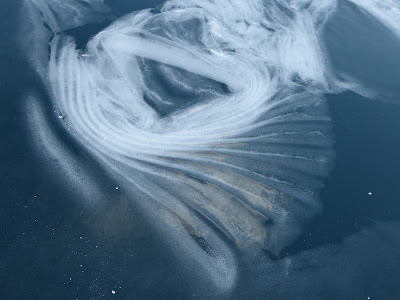A couple of days ago, I roller bladed up the Yoho Valley Road, the route in to see the famous Takakkaw Falls. After about 4 km, this is what I saw:
The debris covering the road must have been at least 10 metres thick at its maximum, and about 50 metres across. The Parks Canada highway crew had started to dig through it, but it's going to take a lot of work to get the road open.
 |
| Looking down the Yoho Valley Road at Mt Cathedral |
The winter of 2017 saw an intense avalanche season here in the Canadian Rockies, peaking in mid-March. At the base of the snowpack for almost the entire winter, there was a thick layer of really weak hoar frost crystals. After the heavy snows of March, this layer got overloaded, and really large slides rushed down the mountainsides. Some avalanches ran beyond their historic end points, knocking over trees that were centuries old.
 |
| Yoho Valley Road, ten feet off the road surface! |
In the last couple of weeks, we've managed to get onto some of favourite trails as they come into shape for the summer hiking season. The Valley of the Ten Peaks is in very good condition, and the Plain of Six Glaciers trail is now hikeable, even though there are some piles of avalanche debris across the path. But on almost every trail, you can see dramatic dramatic changes wrought by this winter's epic snowslides.
We'll be showing people the avalanche after-effects all summer, but here's a quick photo review of what came down the mountains between March and May
1. at Sunshine Meadows in early May.
 |
Nadine with our friends Eva and Paul, posing beside a big chunk of
cornice that came down in March |
 |
| Joel on top of the cornice chunk. |
2. The Icefields Parkway on May 4.
Parks Canada did avalanche control to ensure that the road from Lake Louise to Jasper stayed safe. The snow that came down covered the highway to a depth of 15 metres (almost 50 feet) and took a couple of days to completely clear.
 |
Avalanche debris across the Icefields Parkway.
Photo courtesy of Parks Canada |
3. The Consolation Lakes Trail, late May.
 |
In 25 years here, we'd never seen avalanche debris across this trail.
This tree used to stand straight up! |
4. The Plain of Six Glaciers trail, early June.
 |
One of our guests, Dave, sizing up a centuries old fir tree
that was snapped in half in an avalanche |
 |
Trees like this are very sturdy, so the forces required to break them
are truly impressive |
5. The Eiffel Lake trail, last weekend.
 |
| At least 5 metres of snow fill the big slide path before Eiffel Lake. |
 |
| The Valley of the Ten Peaks. |

















































